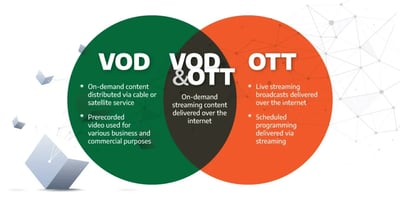Imagine you’re watching your favorite show online, and suddenly, it starts buffering. Annoying,...
How YouTube CDN work?
Understanding YouTube CDN:
The Backbone of Video Streaming
Picture this: It's a Friday evening, and you've just settled down with a big bowl of popcorn, ready to watch your favorite show on YouTube. You click play, and the video starts instantly, streaming smoothly without a hitch. Ever wondered how YouTube manages to deliver high-quality video content to millions of users worldwide without breaking a sweat? The secret lies in the sophisticated and powerful mechanism known as YouTube's Content Delivery Network (CDN).
In this article, we dive deep into the inner workings of YouTube's CDN, exploring how it efficiently distributes video content across the globe, ensuring seamless playback for users everywhere. Let's unravel the mystery behind this technological marvel and understand why it sets the benchmark for video content distribution networks.
The Foundation of CDNs
Content Delivery Networks (CDNs) are specialized systems of servers distributed across various geographical locations. Their primary purpose is to deliver content, such as web pages, images, and videos, to users with high availability and performance. By positioning servers closer to end-users, CDNs minimize latency, ensuring faster and more reliable access to content.
A CDN works by caching content in multiple locations, known as Points of Presence (PoPs). When a user requests content, the CDN delivers it from the nearest PoP, reducing the distance data must travel and thereby enhancing load times. This method is particularly critical for video content, which requires significant bandwidth and low latency to provide a smooth viewing experience.
YouTube's Global CDN Infrastructure
YouTube leverages one of the most extensive CDN infrastructures in the world, operated by its parent company, Google. This global CDN spans countless data centers and PoPs across different continents, enabling YouTube to serve billions of hours of video every month effortlessly.
One of the key elements of YouTube's CDN is its use of multiple layers of caching. At the core are primary data centers that store the master copies of content. Surrounding these are regional data centers that hold copies of popular content closer to users. Finally, local caching servers located within ISPs or specific regions ensure the swift distribution of trending and high-demand videos.
The Path of a YouTube Video: From Upload to Playback
When a content creator uploads a video to YouTube, it undergoes several stages before becoming available to viewers. First, the video file is transcoded into various formats and resolutions to accommodate different devices and bandwidth conditions. These transcoded versions are then distributed to YouTube's extensive network of data centers and caching servers.
Upon request, the video is delivered to users using adaptive bitrate streaming. This technology dynamically adjusts the video quality based on the viewer's internet speed and device capabilities, ensuring an optimal viewing experience. The video stream is sourced from the nearest caching server, minimizing buffering and latency.
Advanced Technologies Behind YouTube CDN
YouTube's CDN utilizes several advanced technologies to maintain its high performance and reliability. One such technology is QUIC (Quick UDP Internet Connections), a transport protocol developed by Google. QUIC reduces connection establishment time and improves data transfer speed, making video streaming faster and more efficient.
Another vital component is the use of real-time analytics and machine learning algorithms. These tools continuously monitor network conditions, user behavior, and content popularity. They enable YouTube to predict demand patterns, pre-cache content in strategic locations, and optimize routing paths for data delivery.
Challenges and Innovations in YouTube's CDN
Despite its robust infrastructure, YouTube's CDN faces several challenges. The ever-increasing volume of video content, the demand for higher resolutions (such as 4K and 8K), and the need to support live streaming events pose significant hurdles. To address these challenges, YouTube continually innovates its CDN architecture and strategies.
One such innovation is the deployment of edge computing. By processing data closer to the source and reducing the load on central servers, edge computing enhances YouTube's ability to handle high traffic volumes and deliver content with minimal latency. Moreover, advancements in video compression techniques, such as VP9 and AV1 codecs, allow YouTube to deliver higher-quality videos at lower bandwidth costs.
The Future of YouTube's CDN

As video consumption continues to soar, the future of YouTube's CDN looks promising yet challenging. Emerging technologies like 5G, virtual reality (VR), and augmented reality (AR) will necessitate further enhancements in CDN capabilities to meet the growing demands. Furthermore, the shift towards decentralized CDNs, leveraging blockchain and peer-to-peer networks, presents new opportunities for more efficient and secure content delivery.
For businesses looking to implement advanced CDN solutions similar to YouTube's, providers like BlazingCDN offer custom and enterprise-level CDN infrastructure designed for scalability and high performance.
YouTube's CDN stands as a testament to the power of innovation in content delivery, continually pushing the boundaries to ensure that users worldwide enjoy uninterrupted and high-quality video streaming experiences. Whether you're a tech enthusiast or a business looking to optimize your own content delivery, understanding the workings of YouTube's CDN provides valuable insights into the future of digital media.
How does YouTube manage to stay ahead of the curve? What new technologies will shape the future of video streaming? Share your thoughts in the comments below or join the conversation on our social media channels. Happy streaming!



